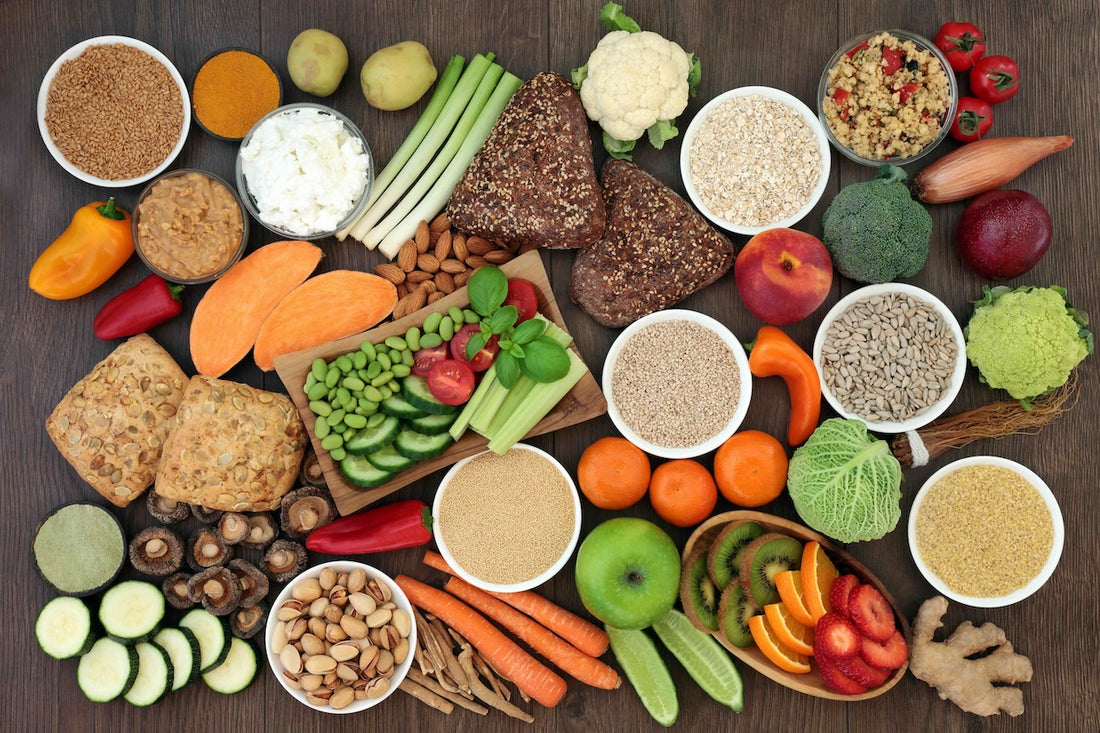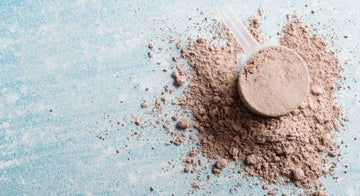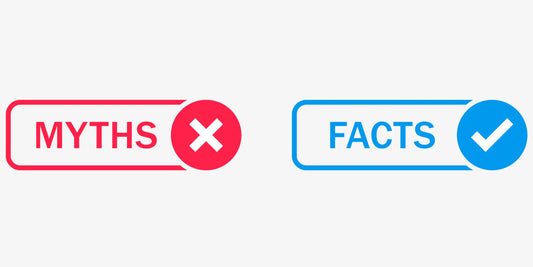Unlocking the Inner Power of Fibre in Your Nutrition and Health
In a world where low-carb, high-fat, and no-sugar diets often take centre stage, there's a quieter hero that sticks to our insides, literally and figuratively, day in and day out - fibre. It's the silent champion of nutrition and a critical component in our daily diet that's often overshadowed by more glamorous dietary trends. This detailed analysis of fibre as a macronutrient will take you on a deep-dive into why fibre is not just necessary but also an important contributor to your overall health and wellbeing. Furthermore, it will shed light on why our pre- and post-workout powders, rich in fibre, deserve a place in your nutrition regime.
For a moment, forget what pop culture or the latest influential diet may have told you about food groups and nutrients. This blog post is grounded in scientific research and aims to offer a comprehensive understanding of the role fibre plays in our body. We'll demystify the science behind it, present findings on its potential health benefits, and discuss in-depth the ranges of fibre-rich foods.
Whether you're a foodie, fitness fanatic, or a health-savvy individual, understanding the power of fibre in your diet can be the game-changer you didn’t know you were missing.
What is Fibre and Why Does it Matter in Our Diet?
Fibre is often referred to as 'roughage', and it exists in plant foods. Unlike other macronutrients such as carbohydrates, proteins, and fats, fibre is not digested and absorbed in the human body. Instead, it passes through our digestive system, adds bulk to the stool, and facilitates regular bowel movements. Fibre is known for its ability to prevent or relieve constipation, and yet, its importance extends far beyond just 'keeping you regular'.
Our topic of discussion, means we will evaluate it as an essential component of our daily dietary intake. The term 'macronutrient' is usually associated with nutrients like proteins, carbohydrates, and fats, which are consumed in large quantities and provide the body with energy. Realizing that fibre fills this slot is the first step to appreciating its significance.
The Two Distinct Types of Fibre – Soluble and Insoluble
When we talk about fibre, we often distinguish between its two main types - soluble and insoluble.
Soluble Fibre:
Soluble fibre dissolves in water, forming a gel-like substance in the gut. You can find it in:
- Oats
- Barley
- Nuts
- Seeds
- Legumes (peas, beans, lentils)
- Fruits (especially apples, citrus fruits)
- Certain vegetables (like carrots)
It's known for its potential in lowering blood cholesterol levels and controlling blood sugar levels for people with diabetes. Its gel-like consistency can slow down your digestion, which can aid in feeling full for a longer time, helping in weight management.
Insoluble Fibre:
Insoluble fibre, on the other hand, doesn't dissolve in water. This type is predominantly responsible for moving bulk through our digestive system and providing 'roughage'. You can find insoluble fibre in:
- Whole grain foods (bran, whole grain bread and pasta)
- Wheat bran
- Corn bran
- Nuts and seeds
- Skin of fruits and root vegetable skins
Both types are critical for health, but offer different benefits. Most plant-based foods contain both types, although in different proportions.
The Low-Down on Getting Too Little (or Too Much) Fibre
In the age of processed foods and refined grains, where much of the natural fibre content is stripped away, we often find ourselves falling short of the recommended daily intake. The risks of insufficient fibre are multi-fold:
- Digestive issues such as constipation can arise.
- Long-term health issues such as obesity, heart disease, and diabetes become more likely due to intake of more processed and less voluminous foods.
On the flip side, while it’s uncommon to get too much fibre from foods alone, overdoing it with fibre supplements can lead to:
- Bloating
- Flatulence
- Diarrhea
It's all about balance. But what exactly is the 'right' amount? The NHS in the UK recommends 30 grams of fibre per day for an adult. This might sound high but when you understand why this number is set, it becomes more manageable and important to hit.
The Importance of Daily Fibre Intake Guidelines
The 30 grams per day target isn't plucked out of thin air. It's a carefully considered amount to ensure that normal bowel function is maintained and your body gets enough nourishment from whole foods. Fibre-rich foods, unlike supplements, offer a plethora of micronutrients, showing that balance is key to fibre's role in nutrition.
Justifying 30 Grams:
Consider that the Institute of Medicine, which provides science-based advice on matters of medicine and health, has established recommendations for dietary fibre. These recommendations vary by age and gender, but a general guideline is 14 grams per 1,000 calories consumed. This makes the 30 grams target for a standard 2,000 calorie diet perfectly reasonable.
In the next sections, we'll explore how easy it is to achieve this target with conscious meal planning and choice of ingredients.
High-Fibre Foods – What Should Your Plate Look Like?
Meeting your daily fibre target doesn’t have to be elusive. With a simple tweak in your food choices, you can easily reach (and even exceed) the recommended intake.
Start with Whole Grains:
Simply switch to whole grain versions of your favorite grains – brown rice instead of white, whole-wheat pasta, and bread.
Be Leguminous:
Legumes are veritable fibre-laden powerhouses. Incorporate a variety of beans, lentils, and chickpeas into your meals and snacks.
The Wonders of Fruit:
Choose fruits with edible peels and eat them with the skin when possible – apples, pears, and berries are excellent choices.
Leafy Greens and Vegetables:
Leafy greens like spinach, kale, and Swiss chard, along with fibrous vegetables such as broccoli, Brussels sprouts, and artichokes can significantly boost your fibre intake.
The Snack Fallacies:
Swap out low-fibre snacks for nuts, seeds, and fresh fruit.
The Hydration Factor:
Consuming adequate water alongside your fibre-rich meals and snacks is crucial. Fibre needs water to work effectively and to prevent digestive discomfort.
The Benefits of a High-Fibre Diet
Eating plenty of fibre has a wealth of health benefits.
Weight Management:
Fibre-rich foods are typically more filling, which can help with weight management.
Digestive Health:
Fibre keeps things moving in your digestive system and prevents constipation. It also acts as a prebiotic, feeding the beneficial bacteria in your gut.
Heart Health:
Soluble fibre can help lower cholesterol levels, reducing the risk of heart disease.
Blood Sugar Control:
For those with diabetes, fibre can slow the absorption of sugar and improve blood sugar levels.
Summary and the Role of Fibre
In conclusion, fibre is a powerful ally in maintaining a healthy diet and lifestyle. It’s not just about our digestive system but about the myriad ways in which fibre can pave the way for a healthy future.
Fibre is not the often-overlooked guest at our nutritional table – it’s a VIP with an all-access pass. It fills, fuels, and fortifies our bodies in ways that other nutrients cannot. Its impact on our health is substantial, and as we uncover more of its benefits, it becomes a non-negotiable component of any well-rounded diet.
Are you ready to give fibre its due place in your dietary plan? Make the change today, and unlock the tremendous benefits it has in store for your health. Your body will thank you with every fibre of its being!
The Pre and Post-Workout Promise:
A pre-workout supplement rich in fibre can provide sustained energy for your workout and ensure that your digestive system is well-prepared for the physical strain.
The high fibre content in your post-workout supplement can aid in muscle recovery and replenishment while keeping you full and satisfied until your next meal.
Our pre-workout has 2g fibre per serving and our post-workout has a whopping 3.4g per serving! Why not head on over and take look at this and all the other benefits our powders have?
No comments








comments